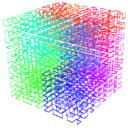Yahoo Answers is shutting down on May 4th, 2021 (Eastern Time) and beginning April 20th, 2021 (Eastern Time) the Yahoo Answers website will be in read-only mode. There will be no changes to other Yahoo properties or services, or your Yahoo account. You can find more information about the Yahoo Answers shutdown and how to download your data on this help page.
Trending News
Prove |-V> = -|V> (vector spaces)?
I'm having a little trouble with this proof. Here are the axioms we may use:
1. Vector sum |V> + |W> is uniquely defined.
2. Scalar multiplication is uniquely defined.
* Closure: the result of sum and multiplication is also an element of the vector space.
* Scalar multiplication is distributive in the vectors: a(|V> + |W>) = a|V> + a|W>
* Scalar multiplication is distributive in the scalars: (a + b)|V> = a|V> + b|V>
* Scalar multiplication is associative: a(b|V>) = (ab)|V>
* Addition is commutative: |V> + |W> = |W> + |V>
* Addition is associative
* There exists a null vector |0> such that |V> + |0> = |V>
* For every vector |V> there exists an inverse under addition, |-V>, such that |V> + |-V> = |0>
We also previously proved
|0> is unique
0|V> = |0>
so you can use those in your proof.
First, I interpret -|V> in what we are supposed to prove as -1|V>, since otherwise no operator has been defined that it could be interpreted as, other than the inverse operation itself which would make the proof trivial.
The book suggests to start with
|V> + -|V> = 0|V> = |0>
I can kind of see how they got that.
|V> + -|V>
= 1|V> + -1|V> ???
= (1 + -1)|V> associative
= 0|V>
But I'm not quite sure how to justify
|V> = 1|V>
in the line marked with ???
In fact I can't even figure out how to rule out the possibility of strange vector spaces that have some subset that aren't even in the domain of scalar multiplication, i.e. there exist vectors |V> such that |V> =/= a|W> for any a or |W>.
I imagine you would go about trying to prove |V> = 1|V> based of the multiplicative identity properties of 1, i.e. 1a = a for scalars, and perhaps the associative axiom. In particular the fact that 1*1=1 might be useful. However I can't figure out how to get it.
2 Answers
- SuleimanLv 69 years agoFavorite Answer
Can we dispense with the bra-ket notation? It's pretty much useless unless you're trying to distinguish between "V as a function" and "V as a vector", which doesn't appear to be the case in this context.
Anyway, I'm guessing that this is what you're seeking to prove:
(-1).v = 0 + (-1).v
= (-v + v) + (-1).v
= -v + (v + (-1).v)
= -v + (1.v + (-1).v)
= -v + (1 + -1).v
= -v + 0.v
= -v + 0
= -v
Note: the reason I've assumed 1.v = v holds is that it's part of the (standard) definition of a vector space; it can not be proved from the other axioms. If your book does not include it then it is in error.
- sittonLv 45 years ago
There are a collection of axioms defining a vector area, yet R+ (assuming you recommend authentic numbers > 0) isn't a vector area over R. For one ingredient, it doesn't include 0. regardless of in case you enhance R+ to be the authentic numbers >=0, it nevertheless isn't because if r is in R+, -r isn't. you may ought to apply distinct operations than prevalent addition and multiplication to make it paintings. Edit: David, sure, for sure that's healthier, although the way the question is said, it isn't. regardless of if he had said "educate R is a vector area over R," it continues to be technically incorrect, for the reason that he particularly ought to assert the operations at the same time as defining the gap, or a minimum of say "make R+ right into a vector area over R." wager I often times get somewhat snippy with questions that are not appropriately said.



